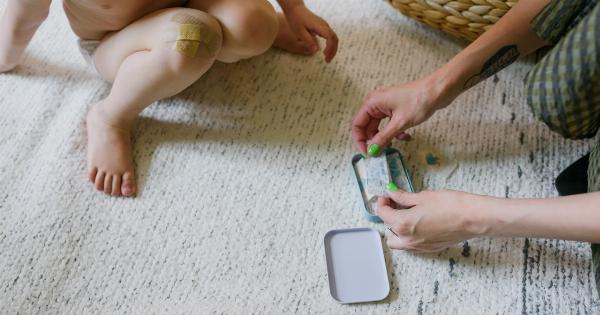Over the past decade, the field of 3D printing has made incredible strides, revolutionizing industries such as manufacturing, architecture, and even food.
While the technology has primarily been used for creating intricate objects and prototypes, it is now progressively moving towards medical applications. One particularly promising area of research is the development of 3D-printed skin.
As scientists and engineers continue to make significant advancements, the possibility of using 3D-printed skin for various medical purposes gets closer to becoming a reality.
1. The Progress
The development of 3D-printed skin can be traced back to the early 2000s when researchers began experimenting with the concept. However, it is in recent years that significant progress has been made.
Scientists have focused on creating functional skin substitutes that closely mimic the properties of human skin in terms of structure, cellular components, and elasticity.
One of the leading breakthroughs in this area came from a team of researchers at the Universidad Carlos III de Madrid in Spain. They developed a 3D bioprinter capable of creating functional human skin.
The printer utilizes bioinks, a mixture of biological components, to create skin tissue with high cell density. This breakthrough has paved the way for the use of 3D-printed skin in medical treatments and transplants.
Another notable development comes from Wake Forest Institute for Regenerative Medicine in the United States.
They have developed a unique bioprinting system that can create different layers of skin, including the dermis, epidermis, and a hypodermis layer that supplies blood vessels. By incorporating blood vessels, the 3D-printed skin becomes capable of integrating with existing tissues, offering the potential for improved healing and regeneration.
2. Benefits of 3D-Printed Skin
The advancements in 3D-printed skin bring several benefits to the medical field.
2.1. Meeting the High Demand for Skin Grafts
Skin grafts, the process of transplanting healthy skin to replace damaged or lost skin, are commonly required for patients with severe burns, chronic wounds, or other skin conditions.
However, the availability of suitable donors is limited, leading to long waiting times and an increased risk of infections. 3D-printing skin can address this issue by providing a sustainable and readily available source of skin substitutes, reducing patients’ wait time and potential complications.
2.2. Customization and Personalization
Every patient has unique requirements when it comes to medical treatments. 3D-printed skin allows for customization and personalization by tailoring the skin substitute to the individual patient.
This ensures a better match in terms of color, texture, and surface area, increasing the chances of successful integration with the patient’s existing skin tissue.
2.3. Reduced Risk of Rejection and Infection
Traditional skin grafts often face the risk of rejection by the patient’s immune system.
With 3D-printed skin, it is possible to use the patient’s own cells, reducing the likelihood of rejection and minimizing the need for immunosuppressant drugs, which can have significant side effects. Additionally, the controlled and sterile environment of the 3D-printing process minimizes the risk of infection, improving patient safety.
2.4. Accelerated Healing and Regeneration
By incorporating features such as blood vessels and specialized layers, 3D-printed skin offers the potential for improved healing and regeneration. It can promote the growth of new tissue, enhancing the natural healing process.
This becomes particularly beneficial for patients with chronic wounds or extensive burns who often struggle with slow healing rates.
3. Challenges and Limitations
While the progress in 3D-printed skin is promising, there are several challenges and limitations that need to be addressed before widespread medical adoption.
3.1. Scalability
Current 3D-printing processes for creating skin substitutes are relatively slow and time-consuming. To be used in medical applications, the technology needs to be scaled up to meet the high demand.
Improvements in printing speed and efficiency are required to make 3D-printed skin a viable option on a large scale.
3.2. Cost
As with any emerging technology, the cost of 3D printing is a significant factor to consider. The cost of the printers, materials, and infrastructure required for 3D-printed skin production needs to be reduced for wider adoption in healthcare settings.
Cost-effective solutions are necessary to make it accessible to patients and healthcare providers.
3.3. Regulatory Approval
Before 3D-printed skin can be used in medical treatments, it must go through extensive testing and regulatory approval. The safety, efficacy, and quality of the skin substitutes need to be thoroughly evaluated to ensure patient well-being.
Establishing regulatory frameworks and guidelines is essential to ensure that the technology meets the necessary standards.
3.4. Long-Term Stability and Functionality
While current advancements in 3D-printed skin have shown promising results in short-term studies, the long-term stability and functionality of the skin substitutes are yet to be fully understood.
More research is needed to assess the longevity and potential complications that may arise over time. Ensuring the reliability and effectiveness of 3D-printed skin in the long term is critical for its successful integration into medical practice.
4. Potential Uses in the Healthcare Industry
The development of 3D-printed skin opens up a wide range of potential uses in the healthcare industry.
4.1. Skin Transplants
The primary application of 3D-printed skin is expected to be for skin transplants, particularly for patients with burns, chronic wounds, or extensive skin damage.
By providing a readily available source of skin substitutes, it can significantly reduce the waiting times for appropriate donor grafts and improve patient outcomes.
4.2. Testing and Research
3D-printed skin can also be utilized for testing new drugs, cosmetics, and other skincare products. Its close resemblance to human skin allows for reliable and accurate testing, reducing the need for animal models.
This can help in the development of safer and more effective products.
4.3. Reconstruction and Aesthetic Surgeries
For individuals requiring reconstructive or aesthetic surgeries, 3D-printed skin can be used to mimic the appearance and properties of natural skin. It can aid in the restoration of damaged tissue, improving the overall aesthetic results.
4.4. Treatment of Skin Disorders
Certain skin disorders, such as vitiligo, psoriasis, and large-scale tattoo removal, can be challenging to treat effectively.
3D-printed skin offers a potential solution by creating customized skin substitutes that can match the patient’s natural skin tone and texture, resulting in better treatment outcomes.
In conclusion, the progress in 3D-printed skin has brought it closer to being used in medical applications.
With advancements in bio-printing techniques, customization capabilities, and improved healing properties, the potential benefits of 3D-printed skin in the healthcare industry are immense. However, challenges such as scalability, cost, regulatory approval, and long-term stability need to be overcome.
As researchers and scientists continue to push the boundaries of this technology, the day when 3D-printed skin becomes a common tool in medical practice seems to be drawing nearer.































